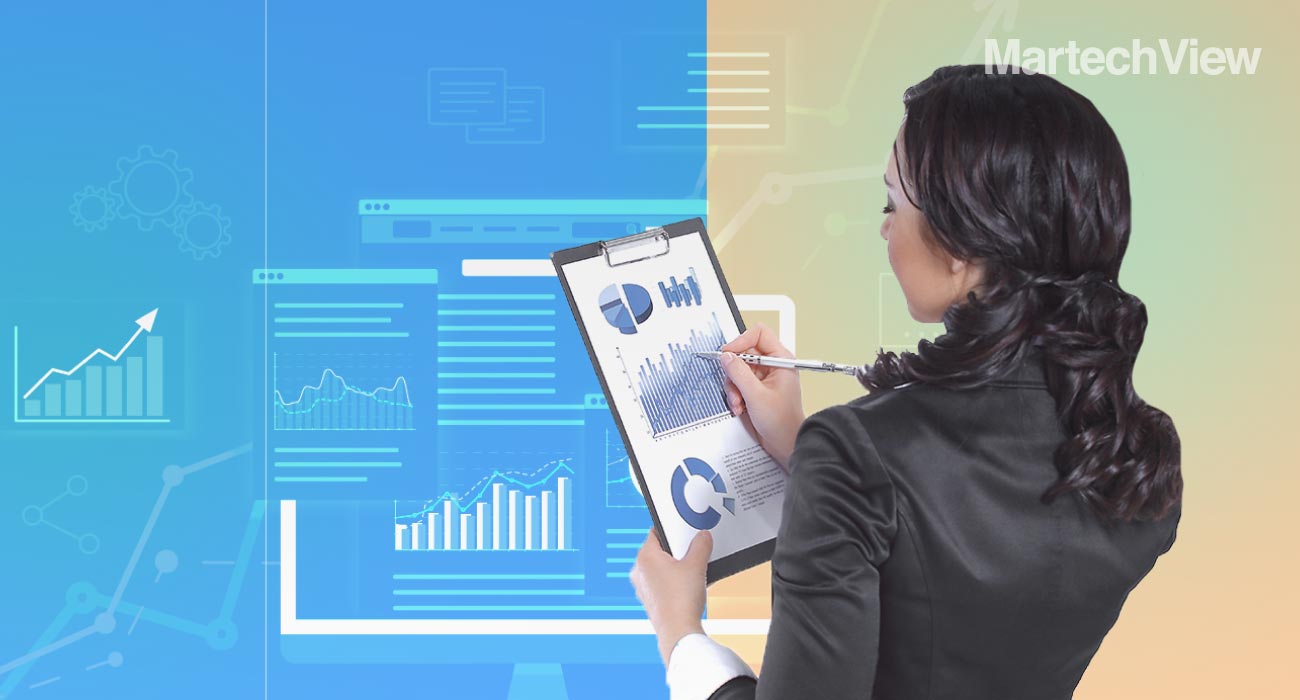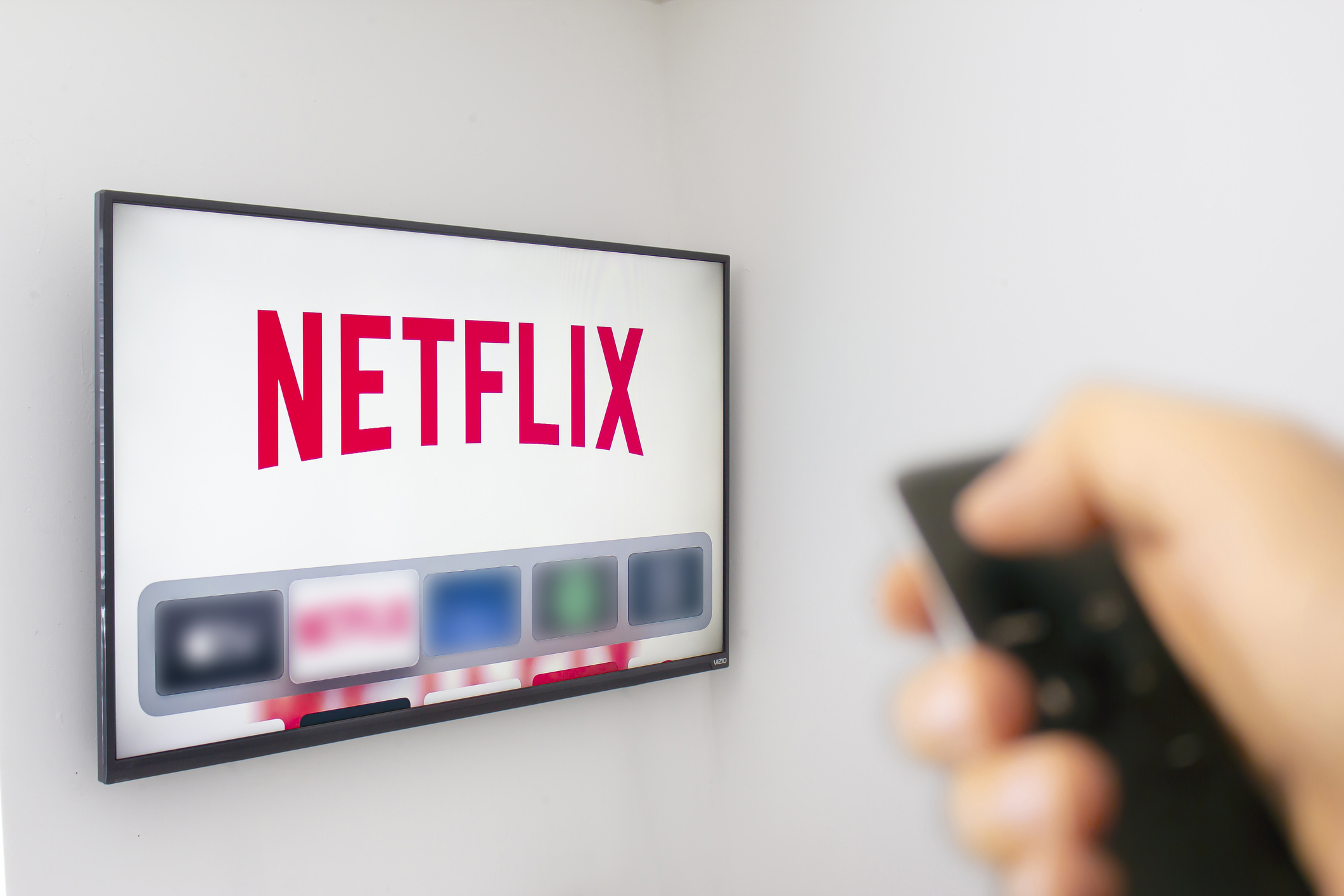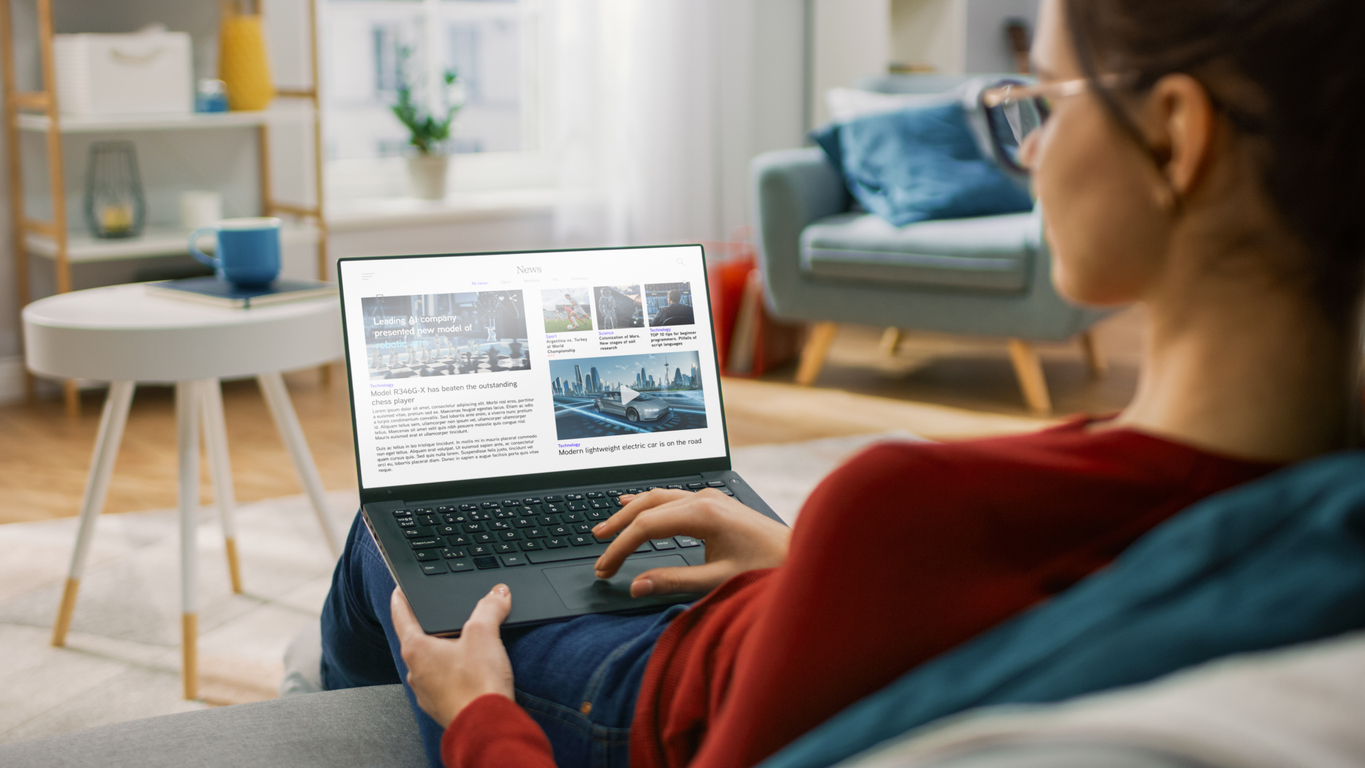A Conversation With Patrick Shea (PODCAST)
 One of AdDaptive’s two co-founders, Patrick Shea, recently had a conversation with Nathan Latka, the driving force behind The Top Entrepreneurs Podcast, in which he divulged information about AdDaptive’s history, success, and future.
One of AdDaptive’s two co-founders, Patrick Shea, recently had a conversation with Nathan Latka, the driving force behind The Top Entrepreneurs Podcast, in which he divulged information about AdDaptive’s history, success, and future.
The recap is below, but you can listen to the whole podcast here (read: spend 15 minutes with Patrick and you’ll learn all you need to know about AdDaptive Intelligence).
Q: Tell us about the business. What do you do and how do you make money?
A: We’re a B2B marketing platform focused on account-based marketing for the display space. We work with publishers and agencies to help them better target their B2B audiences using offline data that we’ve mapped to the online world.
Q: And how do you connect those two online and offline points?
A: We look for any point that can give us a common locator – a lot of it is location data we gather from mobile partners – and we use that in conjunction with offline data from the traditional direct marketing world, including business addresses and other firmographics about a business, and that’s how we go about creating a link between the two. We use other sources, as well – the standard DNS lookup sources, the WHOIS database – and some email data as well to triangulate the audience.
Q: So are you paying folks to look at your backend data sources and fill out the sets?
A: No, actually it’s all proprietary – we do it all ourselves. We do partner with Digital Element and other offline data companies like Digital Element, Virtual DBS, and Dun & Bradstreet to round out our offering, but the actual matching process is proprietary.
Q: Makes sense. And is it a pure SaaS play?
A: We’re not SaaS at all, actually. I’ll give you a little bit of a history of the business and explain how we got there. My co-founder, Kevin, and I worked at an enthusiast portal together a while back. He ran sales, I ran ops, and this was around 2009. We saw the world was moving toward data, toward audience targeting, and the real-time bidding environment provided the liquidity to start doing these things at scale. So, we built a product initially for publishers to help them gather all their first-party data, realize who’s going to their site and what those patterns look like, and then reach out and target them, primarily as an audience extension play. That morphed into a greater focus on B2B, which morphed into creating our own unique data asset. And once we had that, we had a compelling story to go out to ad agencies as well. Currently, our business is entirely B2B. We do work with B2B publishers, like TechTarget or Spiceworks, and directly with ad agencies and brands as well.
Q: And what’s the model?
A: Our model is all CPM-based – all media consumption…. With publishers, revenue is very recurring because we basically become a partner, become an extension of their digital strategy. The effect with the agencies is to complement what they’re trying to do with their trading desks already by giving them a targeting solution that they can’t get elsewhere. That’s really why we’ve been able to have sticky relationships with agencies. It limits some of the exposure that you see with a typical IO-based business.
Q: What’s IO?
A: Somebody that’s just churning over deals from agencies over and over again.
Q: Okay. So you’re basically creating inventory and charging CPM for these folks to reach the audience that you built?
A: Exactly, and the way we look at it is we’re really charging them for the data. But the way the data is, in our opinion, most efficiently transacted in this space is by combining it with impressions, with all of the targeting, and with the analytics everything that comes afterward. Our platform measures which companies are going to a client’s site and other account-based analytics – which companies are downloading white papers, generating leads, things like that. And then we couple it with the targeting component as well, and it’s very heavily automation- and AI-focused so we can maintain a very lean team to execute it.
Q: And are we talking $100 CPM? Do you have a general range you play in?
A: We’re in the mid- to high- single-digits. $7-$9 CMP is where we go to market. With some of our biggest customers, that comes down a little bit.
Q: Yup. And can you give me a general size of how many impressions you’re delivering monthly?
A: Monthly, it’s in the hundreds of millions – somewhere around the 300 million range, but it varies per month. We’re heavy in Q4. We’re working with about 220 clients and may close the year billing about 225. (Editor’s note: This podcast was originally recorded in December 2017.)
Q: What does that mean, billing 225?
A: It means we have about 225 individual clients, so each publisher counts as a client, and each ad agency counts as a client, but each of those could be working with 50 or more brands.
Q: Got it. And you were going to talk about team size?
A: We have 35 here in the office and we have 5 contractors as well – all local in the Waltham, Cambridge, Boston area.
Q: Great. So have you bootstrapped this thing or raised capital?
A: We bootstrapped it right from the start – we’ve never taken any funding.
Q: That’s great. Now, if I do that 300m impression number and divide by 1000, that brings it down to a CPM of basically 300,000, I can multiply that by 8 or 9 to kind of figure out your revenue – is that accurate?
A: Yeah, we’re a little bit seasonal, but we’re in the double-digit millions for revenue.
Q: To be clear, that’s not volume going through you – that’s actual revenue – cost of goods sold?
A: Yes.
Q: If I multiply that, that’s $2.7 million annually I think, right?
A: Actually, that was monthly, not annually, so we’re somewhere in the 300,000 monthly impression range.
Q: Then you’re doing billions of impressions annually.
A: Absolutely.
Q: Interesting. Tell me more about funding history.
A: We’ve been completely bootstrapped from the start – never took any funding. In the beginning, it was just Kevin and me. We had a few good connections in the space at the time. We started running campaigns as a purely managed service, which we then parlayed into hiring a contracted tech team, building a platform, establishing a DMP, getting that out into the publisher space. We focused on the Boston market especially, taking advantage of our network. And then we reinvested as much as we could to grow the company, team, and technology.
Q: And what year did you cross the million-dollar mark in revenue?
A: We were just shy of million-dollar mark at the end of 2011.
Q: Three years after launch is pretty good.
A: We actually started in 2010. So, in 2011, we ended up just shy of a million. Then we doubled it the following year.
Q: That’s good. And then can you round that out for us? In 2016 what did you guys do total? What’s your growth rate year of year?
A: Our growth rate year-over-year is 40-50%. We doubled since the end of 2015. We’re in the double-digits in millions.
Q: But you’ve broken the $10 million mark already.
A: Yes.
Q: So, what do you do with the company? Do you want to keep doing this kind of model where you have to go close and win deals? It is pretty predictable revenue, since you’re charging on the CPM basis and the renewing. But do you ever want to get into the SaaS model or anything else or no?
A: I think there are players in the space: DemandBase is probably the closest competitor to us – they have a similar offering, but they go with the SaaS model to execute it. And I think there are a lot of advantages with that model – the revenue predictability and things like that, though you sacrifice a bit of margin; and you go to clients instead of agencies, so it doesn’t take advantage of our immediate strengths. So, I could see a path towards getting there, but what we really want to do right now is take all the technology that we’ve built that serves the agencies incredibly well and use that as a path to get closer to clients and provide them value. At this point in the company’s lifecycle, that value can flow back though the agencies. If we’re giving them additional intelligence on who’s going to their site, what companies are interacting with them, and how that dovetails with their sales funnel, and have that affect agency spend, that’s great for us for now. And we can use that to build a stronger relationship directly with that client in the future and figure out a way to marry the two. So, we might be doing a lot of the same things as a SaaS business would do for a client, but we’re getting the money through a different model, which has its benefits.
Q: It is pretty predictable though, right? Are you retaining more than 80% of your customers year over year?
A: Well over. In terms of a significant customers, we had a few decreased their overall spend, but we never really lost one. That’s always a risk, but it is fairly predictable. The customers where we did see that decrease were really remnants of the early stages of the business where it was a more basic offering. As our business evolved, and as their business evolved, we went in slightly different directions. We’re able to still provide some value, but as things have changed, we now focus in other areas. But in terms of our sweet spot, we really haven’t lost any.
Q: And these are clients you can afford to put that touch on – at 225 customers and over $10m in revenue, that means each one is paying at least $3700 a month on an annual contract – so you can afford to put that touch on it.
A: Right.
Q: Interesting.
A: When it was just the two of us, we were trying to manage a few hundred media campaigns and try to grow the business and hire and everything else. We put a lot of effort into automating the whole process early on. We have 35 employees here now, but we don’t have any traffickers or campaign analysts on staff – most of that is done programmatically with our algorithms and APIs and things like that. We’d probably be closer to 60 people if we hadn’t done that and spent the time earlier on to build those routines and tools. So that also lets us put our people more focused on the client rather than the day-to-day tactical churn.
Q: So how do you “make yourself rich” from this?
A: Nobody wants to pay taxes twice, so we try to be as efficient with the fundamental economics of the business. But we try to put as much back as we can right now; we’re pleased with the revenue numbers that we’re at, but we’ve got a long runway in front of us. We’re still trying to hire as quickly as possible and do things like take more space, we have a few hardware deployments to make and things like that. But there’s always going to be some left over. For our long-term plans, we could certainly see getting nice and close with a potential strategic – that could work out for us.
Q: Would you sell to DemandBase and Chris?
A: We haven’t had those conversations yet. I’d rather beat Chris and DemandBase, to be honest with you.
Q: They’re between 400 and 600 customers, they’re getting close to breaking $100 million in ARR. It’s a good target to go after.
A: I agree and that’s sort of the advice I get from everybody else. Find the biggest guy in the room and go try and take him down. So that’s how we’d view it. We can continue to run a profitable business and grow it and make it really big. At that point, maybe somebody else that’s strategic may want to step in. But we’re well away from any sort of IPO conversation or anything like that. We have a profitable, growing business.
Given that we’ve never taken any funding, we’d probably treat it a little bit differently. I can’t put myself in the shoes of a funded founder, but we care strongly about sustainable growth and building a business that’s going to be here in 5-10 years, and not trying to run right down to the razor and roll the dice and see what happens. We’re trying to moderate aggressive growth with stability.
Famous Five:
1. Last book you read: The Leaders Bookshelf
2. CEO you’re following: Elon Musk & Jeff Bezos
3. Favorite online tool: LastPass
4. Hours of sleep per night: 6 or 7
5. Advice for 20-year-old self: I was 20 in 2005, and I was playing a lot of online poker then. In 2006, it all went away, so I would tell my 20-year-old self to never leave the poker table for the entirety of that year!
Hear more about co-founder Patrick Shea’s view of the healthy economics, sustainable growth, and cutting-edge technology at AdDaptive Intelligence: “The Boston Poker Player Turned B2B Advertiser Breaks $10m Revenue Mark.”









